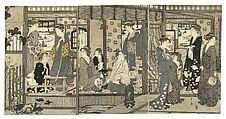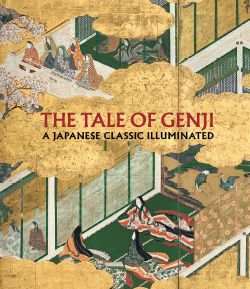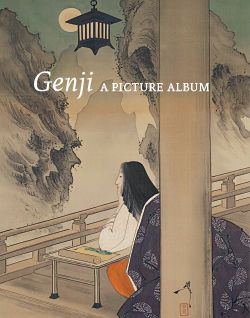Bellflowers (Asagao), from the series Genji in Fashionable Modern Guise (Fūryū yatsushi Genji: Asagao)
Chōbunsai Eishi 鳥文斎栄之 Japanese
Not on view
In this “modernization” of Chapter 20, “Bellflowers,” Genji’s unsuccessful pursuit of Princess Asagao is given an Edo-period setting. The palace interior teems with stylish women, and Genji and Asagao are shown exchanging poems; in the tale, they do so only through intermediaries. The figures, tall and slender with refined features, are characteristic of Chōbunsai Eishi’s prints and paintings. As in other prints from this series of triptychs, the colors are limited, in this case to gray-blue, yellow, and a touch of green. In this respect they conform to the technique of beni-girai, or “avoiding red,” fashionable in the late 1700s.
Due to rights restrictions, this image cannot be enlarged, viewed at full screen, or downloaded.



